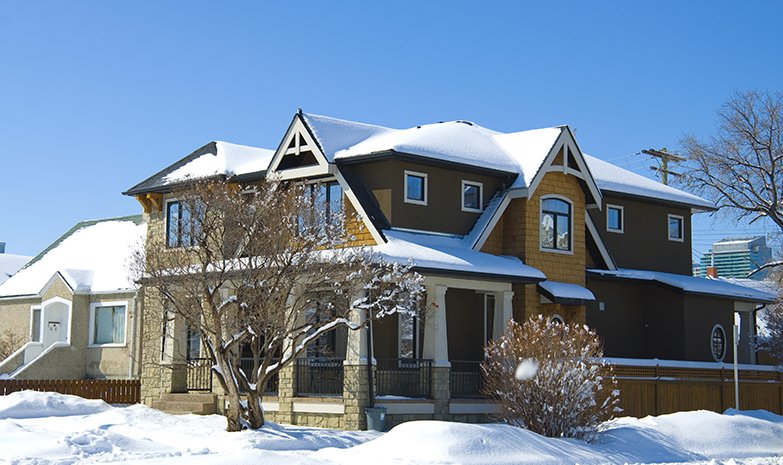
Snow-covered roof inspections
Winter inspections present a number of issues, including snow, low temperatures, and access. Trying to inspect when snow is present makes an inspector’s job much more difficult. Inspecting the roof becomes very challenging and a bit unsafe.
The first real issue is visibility. Can you see the roof’s surfaces? You might not be able to see the entire roof, but a partial inspection is better than nothing. Be sure to disclaim what you did not see. Typically, you would either inspect or not inspect an individual roof face. If it is only partially visible, record it as not visible. In other words, if the front of the house has no snow (usually the south side), but the back (north side) is covered, record the back as not visible and not inspected.
The second issue is accessibility. Can you get can on the roof? In my opinion, you should always get on the roof if possible and safe. Most standards do not require that an inspector go on the roof. You must, however, state how you inspected the roof. That being the case, snow is only problematic if you typically went on the roof to inspect it. Inspecting from the roof is the only way to do a thorough inspection and give the client what they expect. Next best would be to move your ladder around the eaves to get a good view of all surfaces. Last choice would be to use binoculars. I have seen people use binoculars and miss many defects versus going on the roof to inspect.
Bottom line, the roof is a critical aspect of the home and a home inspector should do everything possible to ensure that the potential home buyer is made aware of all the knowledge possible regarding the roof.




